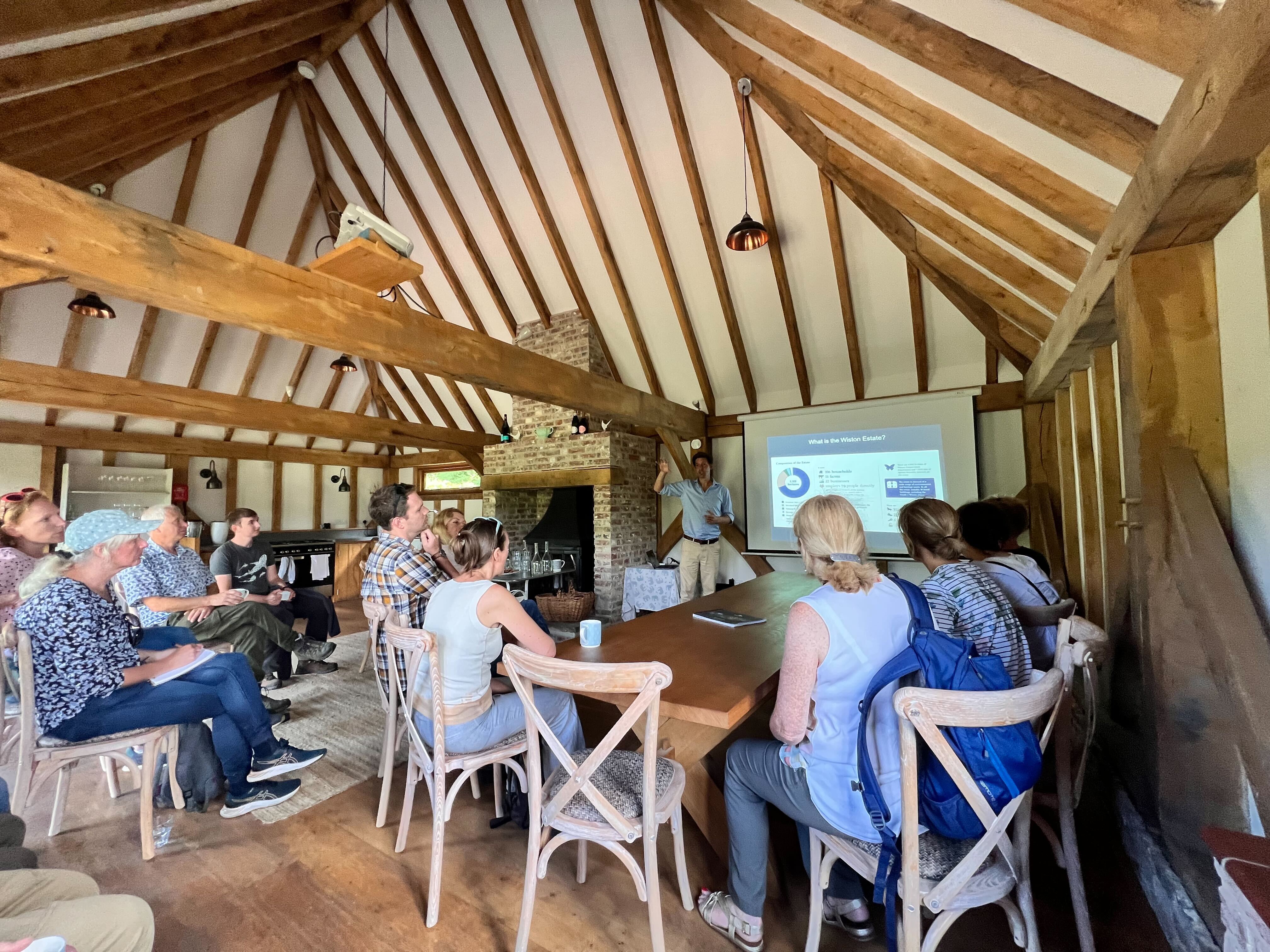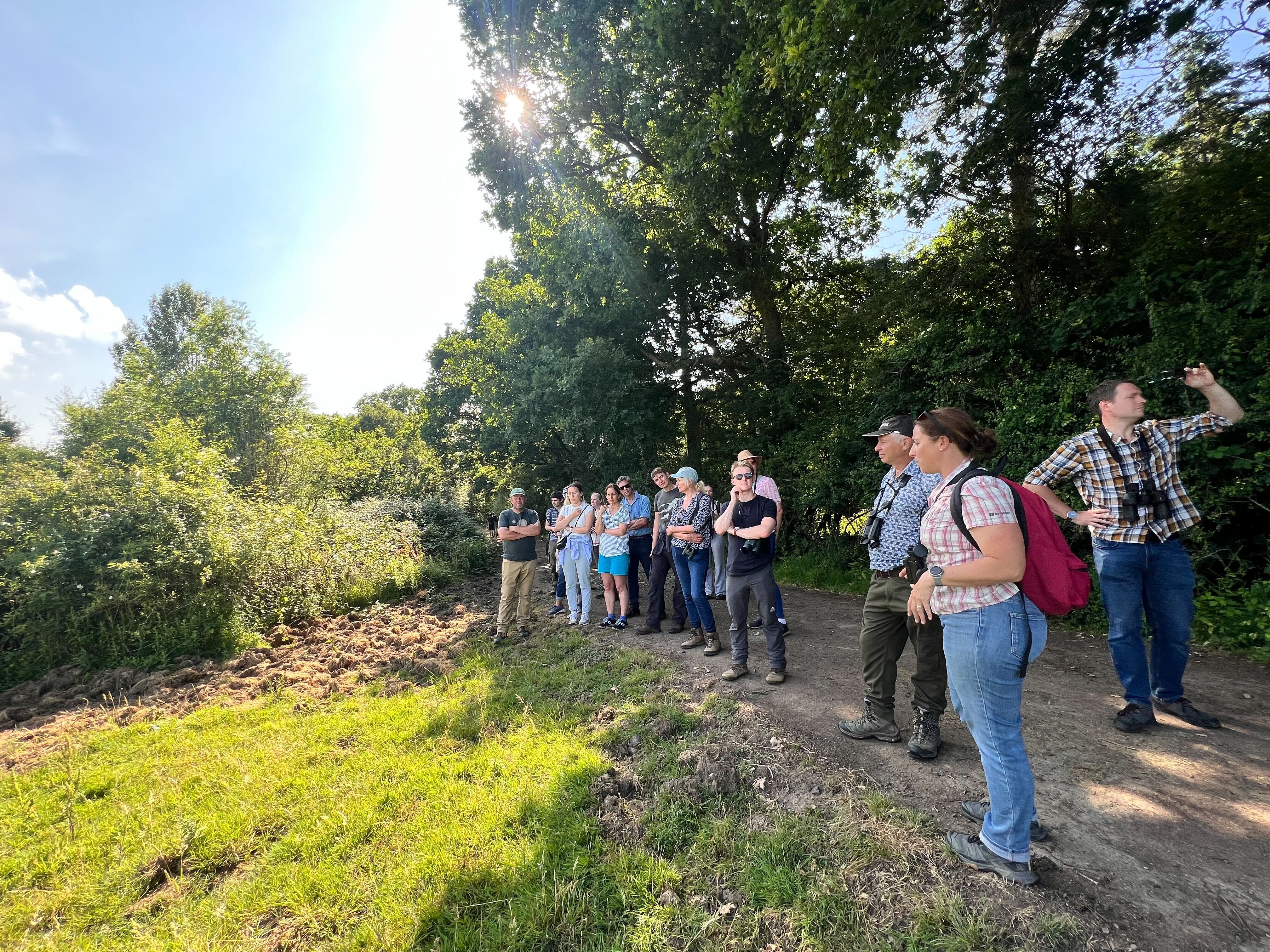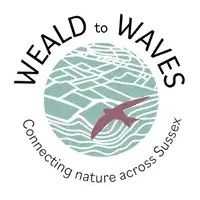Connecting for change - Wildlife Trusts tour the corridor
By W2W - 03 July 2023
When exploring landscape recovery there is nothing like getting out into the landscape! To this end, the Weald to Waves team spent a mammoth day with staff from The Wildlife Trusts journeying up the Arun arm of the corridor.
The Wildlife Trusts represent 911,000 members and their central team play a huge role in shaping public opinion and policy. They were keen to learn more about the scale of ambition of the corridor and range of collaboration along the route, particularly the farmer-led land work.
We started with a morning walk at Home Farm in Climping. Home Farm is home to W2W founding farmer, James Baird and his family. A self-declared hard-nosed arable coastal farmer, he is pioneering ways to balance nature recovery and food production across one of the last undeveloped parts of the Sussex coastline. After heavy storms in 2020 damaged the sea defences, the Environment Agency announced that it had become unfeasible for them to continue maintenance. The sea water also flooded areas of Home Farm, pushing the Bairds to rethink their land use along the shore line. With the sea defences being removed by the Environment Agency and further inevitable climatic shocks to come, James saw an opportunity to restore a rare and historic salt marsh that, until the 17th century, ran along much of the low-lying Sussex coastline. Salt marsh is a hugely valuable lost habitat for the UK. It acts as a sponge, holding and filtering water polluted by human activity before it reaches the sea. It acts as a natural sea defence, buffering storm waves, and attracts a wide range of species that have all but disappeared from our landscape, such as spoonbills and ospreys.
Alongside the salt-marsh restoration, James and his family are looking at a whole farm plan to shift towards more nature positive farming. He’s thrown his hedge cutter away and we walked through fields with billowing hedgerows that protect crops from prevailing winds and host a chorus of birds. Wildflower strips cross the crop fields and create habitat for pollinators and nature pest control.
We then travelled up to the Wiston Estate to meet with fellow W2W founder, Rick Goring, who took us on through the challenges of farming the chalky slopes of the South Downs, and how breaking into wine production has brought the community back to the farm. Wiston is also a family farm, with 6,000 acres straddling the chalk slopes of the South Downs and the flat clay soils of the Weald. Like Home Farm, Wiston’s history is marked by the efforts in the post-war era when Sussex’s woodlands were cleared, hedgerows removed and the land drained in a desperate drive for food security.
The economics of balancing food security with the future of our soils and landscapes is once again back in the headlines. But today, we are more aware of the devastating losses of nature and the services our ecosystems provide. Rick shared an extract from a journal in the 1800s that showed how his forefathers were already critically aware of the challenges of the looming nature crisis. The Goring family were some of the first farmers to adopt environmental land management schemes in the 1980s, helping to restore large swaths of chalk grassland. Rick has taken this further, splitting up Wiston’s large arable fields with nature corridors, wide buffer zones full of wild flowers and dense thorny edges where Sussex’s wildlife benefit from security and connectivity. In the vineyard, every other strip is seeded with wild flowers and as we stand there two red kites hover over a brown hare that lopes through the vines and successfully slips away into the hedgerow.

Crossing over the busy A24 to reach Knepp was a reminder of the huge hurdles we have to overcome in connecting pockets of biodiversity like Home Farm and Wiston. Green infrastructure such as bridges and tunnels, form a key part of our thinking and planning. The UK is light years behind in green infrastructure. Over in Europe, there are hundreds of bridges and tunnels, many of them built at a fraction of the cost that we have spent, in the UK on just two bridges. While infrastructure may require funding, complex, attitudinal barriers can pose even more of a hurdle. Public opinion and national policy are, without a doubt, on the turn but there is a long road ahead in shifting mindsets and adapting our thinking to respond to the crises.
One of the places that has been on the frontline of that change is, of course, Knepp Wildling. It is now in its 21st year of rewilding, having moved out of intensive agriculture in 2002. There has been an abundant return of species, some of them lost to Sussex through habitat loss and environmental pressures. Knepp’s ecosystem restoration has created a renewed niche for species recovery, and we had a chance to see the white storks nesting in the veteran oaks, and spotted one of the first purple emperor butterflies of the season. Like salt marsh, scrub is a missing piece of the puzzle for Sussex’s landscape and seeing the bramble domes nurturing new oaks was a fitting reminder of the services that our flora and fauna provide in replenishing our soils, sequestering carbon and filtering pollutants out from our air and water.

Our evening finished at the Operation Wallacea field skills camp at Knepp, where students are studying a range of ecological survey methods. We hosted an interesting conversation about the vital connection between young ecologists and the farming community and the role for cross-discipline networks in landscape recovery. As the natural capital market expands, we need an expanding workforce to collect ecological baseline data and advise landowners, and young people need the skills and confidence to pick up this mantle.
At the end of the longest day of the year, there was a sense of optimism. This citizen-driven, land manager-led initiative, that looks and behaves so differently to traditional conservation, has the chance to break down false barriers between food and nature. Bringing a diversity of people and partners along on the journey is going to be critical and nothing does that better than travelling the corridor together.

